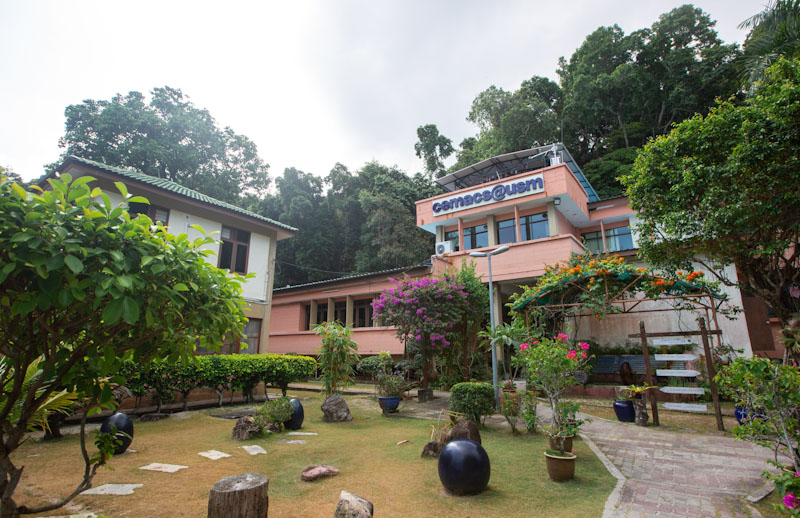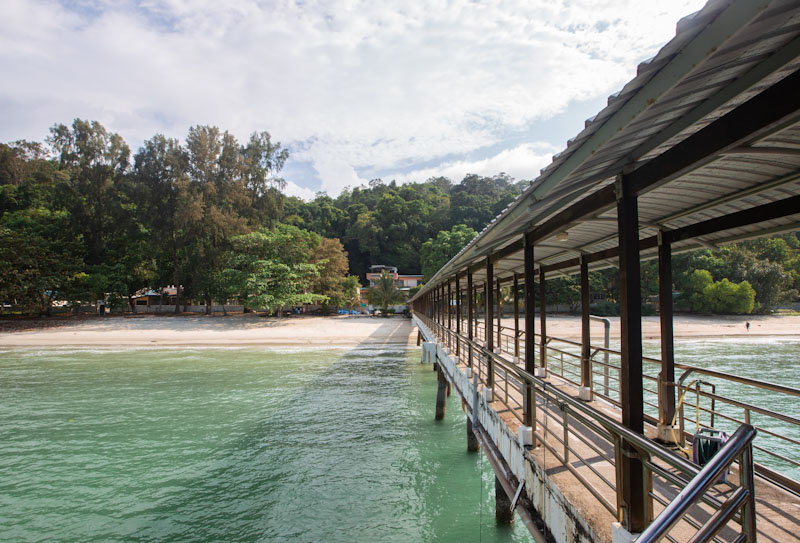CEMACS USM: A GEM FOR THE WORLD TO DISCOVER

When you’re located in the ‘Pearl of the Orient’, you shouldn’t be hard to find on the map.
Or would it?
The Universiti Sains Malaysia (USM) Centre for Marine and Coastal Studies, also known as CEMACS, is located within the area of Penang National Park (Taman Negara Pulau Pinang).
Though the park is believed to be the smallest in the country, its varied and abundant biodiversity would surely invite naturalists on countless return trips.
The same goes with CEMACS. The seafront outpost houses a marine research centre and is surrounded by the flora and fauna.
Can you imagine having a permanent base to do research in a national park? It’s priceless!
Its setting, infrastructure and programmes are its ‘treasures’, if you’re keen on searching for such ‘bounties’.
Quietly tucked in Teluk Aling, it’s a 40-minute hike to the centre for the fit. There’s always the boat service, but only for visitors to CEMACS. Going to other parts of the National Park would require you to pay for the boat trips or taking the marked nature trails.
CEMACS has at its disposal the surrounding biodiversity to study, admire and appreciate. The centre offers research programmes to postgraduates.
Dr. Annette Jaya Ram explains that most of the time, the focus would be on aquaculture and mariculture, as can be seen from the number of dry and wet laboratories, a reference centre and archive that CEMACS has.
At the same time, there are study programmes which could be customised to suit the needs of visitors too. This can vary in duration as well as catering to different age levels. As it serves USM, CEMACS would usually get visitors from university academics or students.
However, a programme for school children has been held where the children came with their parents, to get a closer look at nature by the sea.

The staff would also go into communities and hold outreach and awareness programmes from time to time.
As a research centre that was set up in 1991, it has come a long way.
Aside from the research/training centre facilities available, the outdoor ‘Balinese’ or ‘Japanese’ garden landscaping could surely be a conversation piece.
Dr. Abe Woo Sau Pinn said that the various gardens function as points where life and its relation to nature can be appreciated.
The staff at the centre has done a very good job of maintaining the gardens and the surroundings.
Welcoming visitors from all over the country and the world has become routine for the staff there.
Issues that have been discussed there include identifying and preserving marine diversity, aquaculture/mariculture projects, jellyfish, pollution and tsunami monitoring and other coastal-related activities.
The centre has been involved with partners on research and conservation programmes from countries around the world, such as the UK, USA, Japan, Singapore, Vietnam, Cambodia, India, Indonesia, Iran, Canada and Australia among others.
Director of CEMACS, Professor Dato’ Dr. Aileen Tan Shau Hwai said that CEMACS welcomes anyone or any organisation with plans to become partners or to network.
“We would customise the programmes to fit the needs of the visitors or participants,” she said.
When you’re already known in many parts of the world, it’s not that hard to find anymore.Even if your location is at the quiet and peaceful end of the ‘Pearl of the Orient’.
Text: Mazlan Hanafi Basharudin
- Created on .
- Hits: 5703
